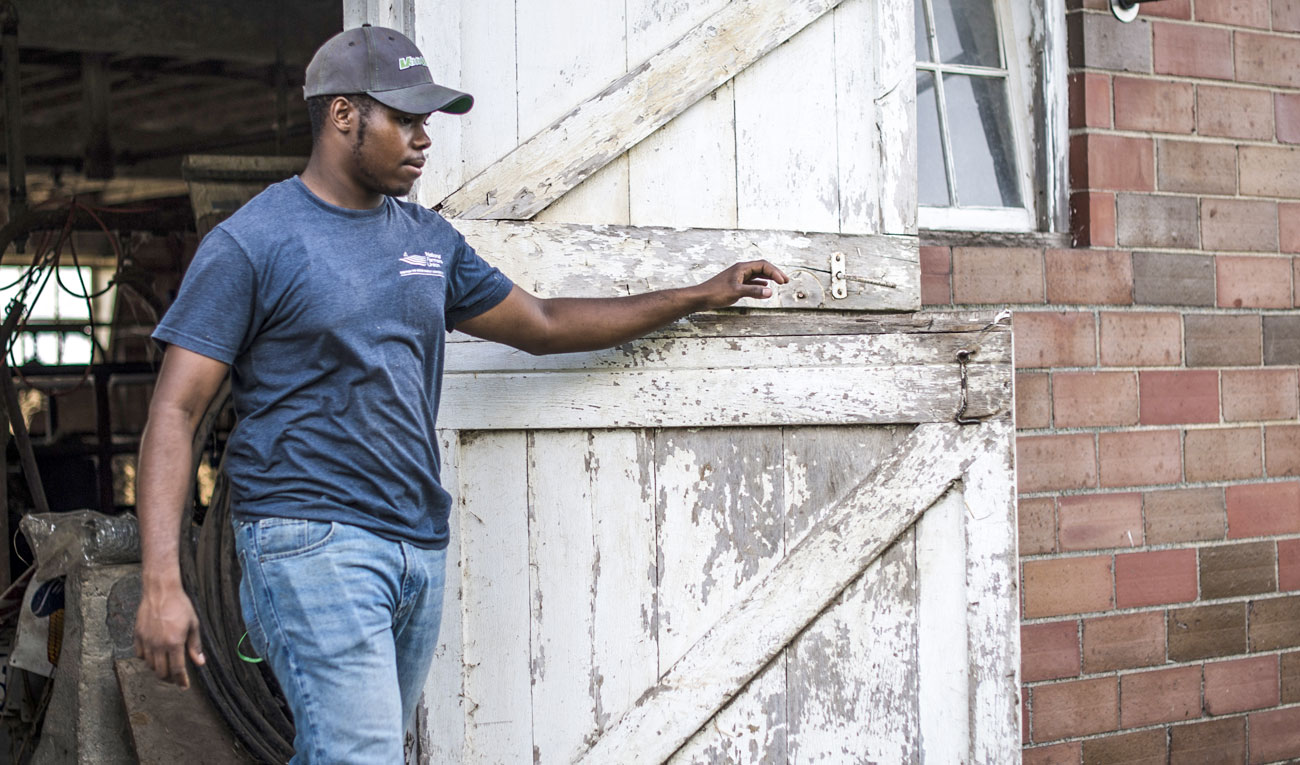
Historical and Cultural Perspectives
As we delve into topics such as grain varieties, agricultural practices, and food traditions, we must also look at the social, cultural, and racial landscapes that influence current patterns of growth and consumption, or lack of consumption, of grains. To holistically cultivate local grain networks and encourage people to eat more whole grains, we need to deepen our understanding of how a select few grain varieties came to play a leading role in the American diet. Grains have a fraught and complex past, and many important stories do not appear in the historical narrative.
Historically, Black farmers have faced discriminatory practices from the USDA, especially involving loans and conservation payments (https://www.ewg.org/research/black-farmer-usda-timeline/), which has resulted in a drastic loss in Black land ownership and farmland in the U.S. In 1920, 925,000 Black farmers owned 16 million acres of land and 14% of the U.S. farmland. By 1970, Black farmers owned only 10% of U.S. farmland1. Similarly, Japanese, Chinese, and Latinx farmers and laborers struggle against discrimination and biased policies. Historically and currently, non-white farm laborers are marginalized by discriminatory policies, including wages, workers’ rights, and immigration laws.2
Before European settlement, Native Americans grew corn and gathered wild rice in many locations across North America. Specific grain varieties were geographically dependent, as they are now, and were often grown in unison with other regionally-determined crops. These crops then became the ingredient list in commonly prepared fare which today has mostly disappeared. Awareness of this historical context strengthens the modern food culture landscape by prompting the reader to perceive foodways as fluid and evolving.
In this Guide, we seek to specifically include the voices of the Native American, Latinx, and Black contributors whose current work highlights and continues the seminal contributions of their agrarian ancestors. Racial and ethnic oppression has resulted in exclusionary policy and practice, making participation in regional grain cultivation more difficult for contributors from these groups compared to their White counterparts. Acknowledging this systemic injustice encourages us to understand that today’s typical U.S. diet is a cloth woven from a history of colonialism. Within this conversation, we underscore the role of class as a determinant of access that continues to foster a non-inclusive grain culture. The spirit of the Grain Guide is inclusive: we join those who are revitalizing the connections derived from shared foodways, in this case, the grain networkers. We aim to share a breadth of perspectives that encourage the reader to adopt a critical eye toward current food practices.
Fortunately, many voices are leading an effort to raise the visibility and presence of diverse farmers, millers, chefs, bakers, and advocates for healthful eating. We’ve spoken with two leaders whose ideas and actions are fostering change, Sean Sherman and Armando Medinaceli. In our Resources section, you’ll find links to their interviews. Our list isn’t comprehensive. We encourage you to explore your community to find people to collaborate with and help fortify the diversity within your local grain network.
Sean Sherman:
Indigenous chef and food educator Sean Sherman is a leader in modernizing Indigenous cuisine and increasing access to Indigenous food in Native communities. Through his combination restaurant and food movement, Sioux Chef in Minnesota, Sherman plans to create a path forward for understanding the significance of Indigenous cuisine. In this way, we can begin to contextualize rich traditions that existed before the introduction of wheat on North American soil. He says, “To truly understand North American modern cuisine today, you have to understand the Indigenous perspective because that’s the basis of it… that’s what was here first, and countless generations of humans were here long before Europeans settled here.”
Armando Medinaceli, Ph.D.
Armando, the Indigenous Education Director at NĀTIFS (North American Traditional Indigenous Food Systems), is a Bolivian ethnobiologist with extensive experience collaborating with Indigenous peoples in Bolivia, Mexico, and Guatemala. He teaches graduate courses in ethnobiology, Indigenous foodways and food sovereignty, biocultural diversity, sustainability, climate change, and community conservation.
t’s not just food, you know. It’s way more than that — it’s something that is representing, that is, describing, in a way, a culture.” – Armando Medinaceli
Fortunately, there are many voices leading an effort to raise the visibility and presence of diverse farmers, millers, chefs, bakers, and advocates for healthful eating. We’ve spoken with two leaders whose ideas and actions are fostering change, Sean Sherman and Armando Medinaceli.. In our Resources section, you’ll find links to their interviews. Our list isn’t comprehensive. We encourage you to explore your community to find people to collaborate with and help fortify the diversity within your local grain network.
Indigenous chef and food educator Sean Sherman is a leader in modernizing Indigenous cuisine and increasing access to Indigenous foods in Native communities. Through his combination restaurant and food movement, Sioux Chef in Minnesota, Sherman plans to create a path forward for understanding the significance of Indigenous cuisine. In doing this, we begin to contextualize rich traditions that existed prior to the introduction of wheat on North American soil. Sean: “To truly understand North American modern cuisine today, you really have to understand the Indigenous perspective because that’s the basis of it…that’s what was here first, and countless generations of humans were here long before Europeans settled here.”
Armando Medinaceli, Ph.D. is the Indigenous Education Director at NĀTIFS – North American Traditional Indigenous Food Systems. Armando Medinaceli is a Bolivian ethnobiologist with extensive experience collaborating with indigenous peoples in Bolivia, Mexico, and Guatemala as well as teaching at undergraduate and graduate levels in the United States and Bolivia. He has over fifteen years of experience working in ethnobiology, indigenous foodways and food sovereignty, biocultural diversity, sustainability, climate change, community conservation, and collaborative video.



